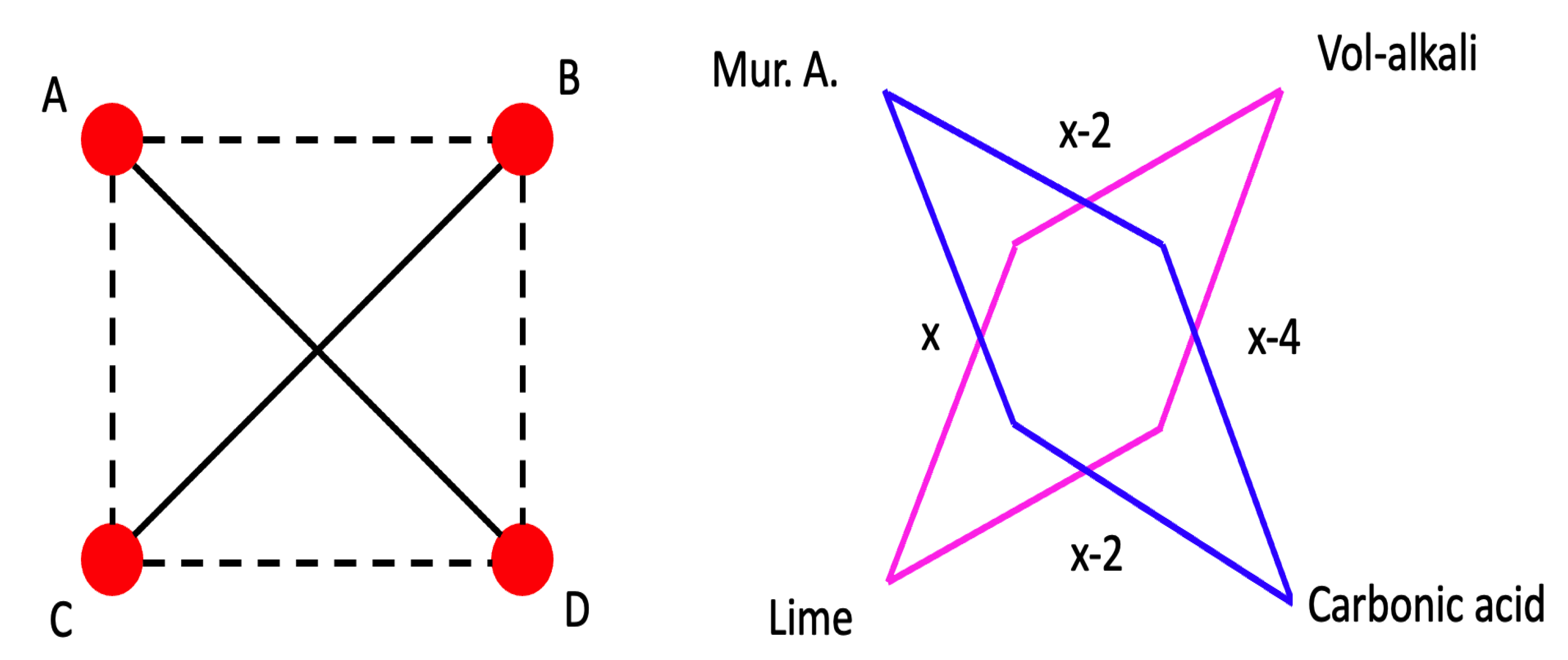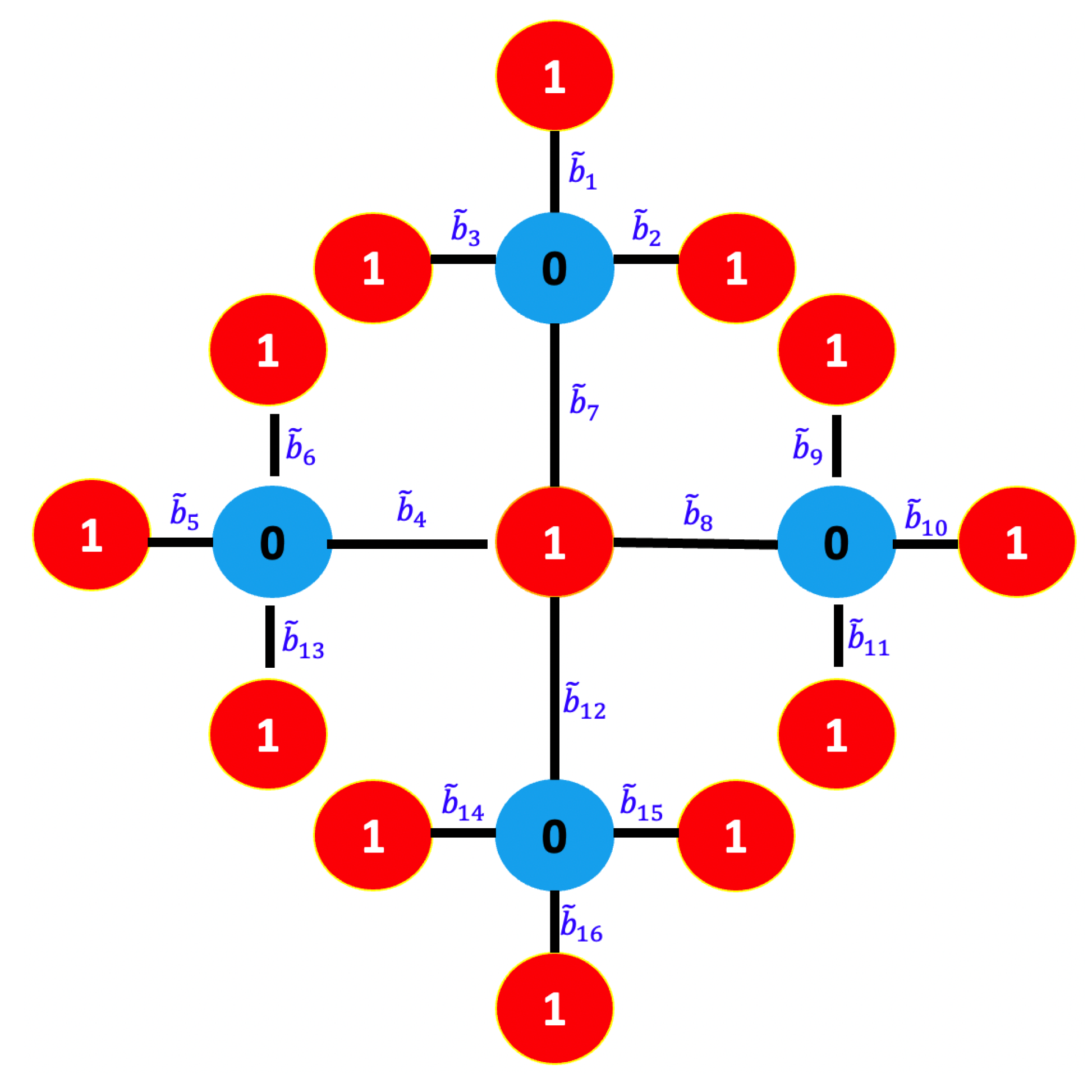Study of Fractional Differential Equations Emerging in the Theory of Chemical Graphs: A Robust Approach
Abstract
:1. Introduction
2. Preliminaries
3. Main Results
4. An Example
5. Discussion and Conclusions
- Is there another approach that leads to the same conclusion as we proposed?
- Can this concept be applied to graphs with a circular ring structure?
- We also present the suggested fractional differential Equation (1)’s stability as an unsolved problem.
Author Contributions
Funding
Data Availability Statement
Acknowledgments
Conflicts of Interest
References
- Thackray, A. Atoms and Powers; Harvard University Press: Cambridge, MA, USA, 1970. [Google Scholar]
- Bonchev, B. Chemical Graph Theory: Introduction and Fundamentals; CRC Press: Boca Raton, FL, USA, 1991. [Google Scholar]
- Oldham, K.B.; Spanier, J. The Fractional Calculus; Academic Press: New York, NY, USA, 1974. [Google Scholar]
- Debnath, P.; Srivastava, H.M.; Kumam, P.; Hazarika, B. Fixed Point Theory and Fractional Calculus–Recent Advances and Applications; Springer: Singapore, 2022. [Google Scholar]
- Lakshmikantham, V.; Leela, S.; Devi, J.V. Theory of Fractional Dynamic Systems; Cambridge Academic: Cambridge, UK, 2009. [Google Scholar]
- Podlubny, I. Fractional Differential Equations; Academic Press: New York, NY, USA, 1999. [Google Scholar]
- Miller, K.S.; Ross, B. An Introduction to the Fractional Calculus and Fractional Differential Equation; John Wiley: New York, NY, USA, 1993. [Google Scholar]
- Turab, A.; Sintunavarat, W. A unique solution of the iterative boundary value problem for a second-order differential equation approached by fixed point results. Alex. Eng. J. 2021, 60, 5797–5802. [Google Scholar] [CrossRef]
- Sintunavarat, W.; Turab, A. Mathematical analysis of an extended SEIR model of COVID–19 using the ABC-fractional operator. Math. Comput. Simul. 2022, 198, 65–84. [Google Scholar] [CrossRef] [PubMed]
- Abdeljawad, A.; Agarwal, R.P.; Karapinar, E.; Kumari, P.S. Solutions of the nonlinear integral equation and fractional differential equation using the technique of a fixed point with a numerical experiment in extended b-metric space. Symmetry 2019, 11, 686. [Google Scholar] [CrossRef] [Green Version]
- Adiguzel, R.S.; Aksoy, U.; Karapinar, E.; Erhan, I.M. On the solution of a boundary value problem associated with a fractional differential equation. Math. Meth. Appl Sci. 2020, 1–12. [Google Scholar] [CrossRef]
- Sabatier, J.; Agarwal, O.P.; Machado, J.A.T. Advances in Fractional Calculus, Theoretical Developments and Applications in Physics and Engineering; Springer: Berlin, Germany, 2007. [Google Scholar]
- Agarwal, R.P.; Lakshmikantham, V.; Nieto, J.J. On the concept of solution for fractional differential equations with uncertainty. Nonlinear Anal. Theory 2010, 72, 2859–2862. [Google Scholar] [CrossRef]
- Machado, J.A.T.; Kiryakova, V.; Mainardi, F. Recent history of fractional calculus. Commun. Nonlinear Sci. 2011, 16, 1140–1153. [Google Scholar] [CrossRef] [Green Version]
- Baleanu, D.; Diethelm, K.; Scalas, E.; Trujillo, J.J. Fractional Calculus Models and Numerical Methods, Series on Complexity. Nonlinearity and Chaos; World Scientific: London, UK, 2012. [Google Scholar]
- Qiu, T.; Bai, Z. Existence of positive solution for singular fractional equations. Electr. J. Differ. Equ. 2008, 146, 1–9. [Google Scholar]
- Debnath, P.; Konwar, N.; Radenovic, S. Metric Fixed Point Theory: Applications in Science, Engineering and Behavioural Sciences; Springer: Berlin/Heidelberg, Germany, 2021. [Google Scholar]
- Afshari, H.; Kalantari, S.; Karapinar, E. Solution of fractional differential equations via coupled fixed point. Electron. J. Differ. Equ. 2015, 286, 1–12. [Google Scholar]
- Alqahtani, B.; Aydi, H.; Karapinar, E.; Rakocevic, V. A solution for Volterra fractional integral equations by hybrid contractions. Mathematics 2019, 7, 694. [Google Scholar] [CrossRef] [Green Version]
- Karapinar, E.; Fulga, A.; Rashid, M.; Shahid, L.; Aydi, H. Large contractions on quasi-metric spaces with an application to nonlinear fractional differential equations. Mathematics 2019, 7, 444. [Google Scholar] [CrossRef] [Green Version]
- Zhang, S. Existence of positive solutions for some class of nonlinear fractional equation. J. Math. Anal. Appl. 2003, 278, 136–148. [Google Scholar] [CrossRef] [Green Version]
- Hashim, I.; Abdulaziz, O.; Momani, S. Homotopy analysis method for fractional IVPs. Commun. Nonlinear Sci. 2009, 14, 674–684. [Google Scholar] [CrossRef]
- Al-Mdallal, M.; Syam, M.I.; Anwar, M.N. A collocation-shooting method for solving fractional boundary value problems. Commun. Nonlinear Sci. 2010, 15, 3814–3822. [Google Scholar] [CrossRef]
- Zhang, S. The existence of a positive solution for nonlinear fractional differential equation. J. Math. Anal. Appl. 2000, 252, 804–812. [Google Scholar] [CrossRef] [Green Version]
- Lumer, G. Connecting of local operators and evolution equations on a network. Lect. Notes Math. 1985, 787, 219–234. [Google Scholar]
- Zavgorodnii, M.G.; Pokornyi, Y.V. On the spectrum of second-order boundary value problems on spatial networks. Usp. Mat. Nauk. 1989, 44, 220–221. [Google Scholar]
- Gordeziani, D.G.; Kupreishvli, M.; Meladze, H.V.; Davitashvili, T.D. On the solution of boundary value problem for differential equations given in graphs. Appl. Math. Lett. 2008, 13, 80–91. [Google Scholar]
- Mehandiratta, V.; Mehra, M.; Leugering, G. Existence and uniqueness results for a nonlinear Caputo fractional boundary value problem on a star graph. J. Math. Anal. Appl. 2019, 477, 1243–1264. [Google Scholar] [CrossRef]
- Graef, J.R.; Kong, L.J.; Wang, M. Existence and uniqueness of solutions for a fractional boundary value problem on a graph. Fract. Calc. Appl. Anal. 2014, 17, 499–510. [Google Scholar] [CrossRef] [Green Version]
- Etemad, S.; Rezapour, S. On the existence of solutions for fractional boundary value problems on the ethane graph. Adv. Differ. Equ. 2020, 276, 2020. [Google Scholar] [CrossRef]
- Turab, A.; Sintunavarat, W. The novel existence results of solutions for a nonlinear fractional boundary value problem on the ethane graph. Alex. Eng. J. 2021, 60, 5365–5374. [Google Scholar] [CrossRef]
- Baleanu, D.; Etemad, S.; Mohammadi, H.; Rezapour, S. A novel modeling of boundary value problems on the glucose graph. Comm. Nonlinear Sci. Num. Simul. 2021, 100, 105844. [Google Scholar] [CrossRef]
- Rezapour, S.; Deressa, C.T.; Hussain, A.; Etemad, S.; George, R.; Ahmad, B. A theoretical analysis of a fractional multi-dimensional system of boundary value problems on the methylpropane graph via fixed point technique. Mathematics 2022, 10, 568. [Google Scholar] [CrossRef]
- Turab, A.; Mitrovic, Z.D.; Savic, A. Existence of solutions for a class of nonlinear boundary value problems on the hexasilinane graph. Adv. Differ. Equ. 2021, 494, 2021. [Google Scholar] [CrossRef]
- Ali, W.; Turab, A.; Nieto, J.J. On the novel existence results of solutions for a class of fractional boundary value problems on the cyclohexane graph. J. Inequal. Appl. 2022, 5, 2022. [Google Scholar] [CrossRef]
- Sintunavarat, W.; Turab, A. A unified fixed point approach to study the existence of solutions for a class of fractional boundary value problems arising in a chemical graph theory. PLoS ONE 2022, 17, e0270148. [Google Scholar] [CrossRef]
- Caputo, M.; Fabrizio, M. A new definition of fractional derivative without singular kernel. Prog. Fract. Differ. Appl. 2015, 1, 1–13. [Google Scholar]
- Smart, D.R. Fixed Point Theorems; Cambridge University Press: Cambridge, UK, 1990. [Google Scholar]




Publisher’s Note: MDPI stays neutral with regard to jurisdictional claims in published maps and institutional affiliations. |
© 2022 by the authors. Licensee MDPI, Basel, Switzerland. This article is an open access article distributed under the terms and conditions of the Creative Commons Attribution (CC BY) license (https://creativecommons.org/licenses/by/4.0/).
Share and Cite
Turab, A.; Rosli, N. Study of Fractional Differential Equations Emerging in the Theory of Chemical Graphs: A Robust Approach. Mathematics 2022, 10, 4222. https://doi.org/10.3390/math10224222
Turab A, Rosli N. Study of Fractional Differential Equations Emerging in the Theory of Chemical Graphs: A Robust Approach. Mathematics. 2022; 10(22):4222. https://doi.org/10.3390/math10224222
Chicago/Turabian StyleTurab, Ali, and Norhayati Rosli. 2022. "Study of Fractional Differential Equations Emerging in the Theory of Chemical Graphs: A Robust Approach" Mathematics 10, no. 22: 4222. https://doi.org/10.3390/math10224222
APA StyleTurab, A., & Rosli, N. (2022). Study of Fractional Differential Equations Emerging in the Theory of Chemical Graphs: A Robust Approach. Mathematics, 10(22), 4222. https://doi.org/10.3390/math10224222





